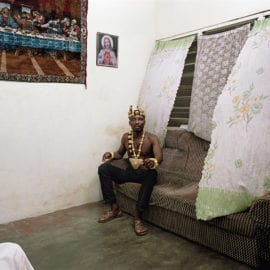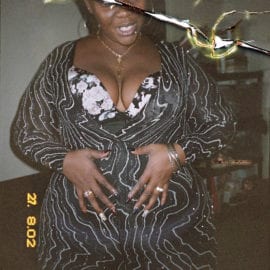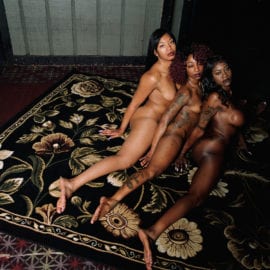Creative renewal in the work of Deana Lawson
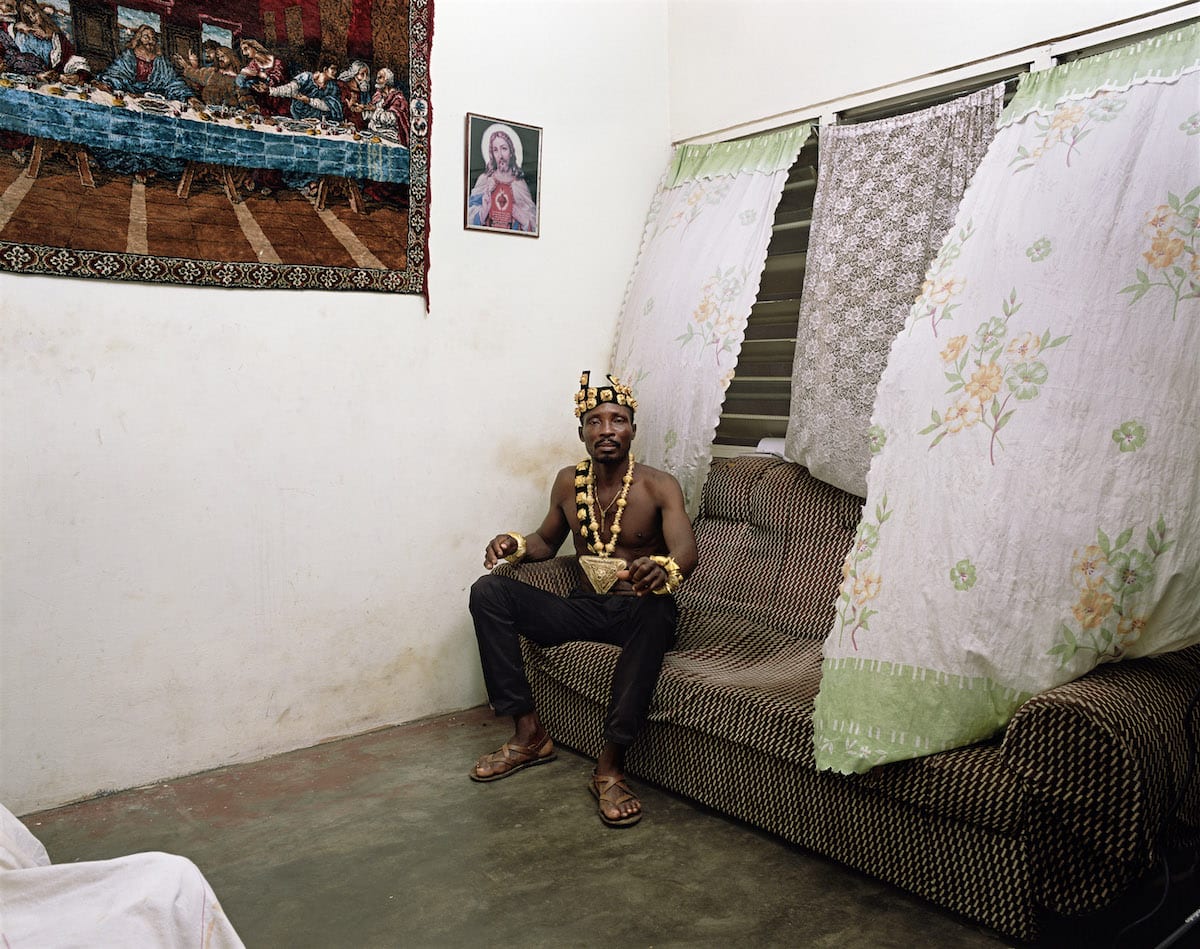
Deana Lawson’s work spans multiple planes. It occupies the physical world, a realm of tangible subjects, and it transcends this, entering a space in which the material falls away and these subjects become vessels for something else: the spiritual, the sacred, the miraculous. An elevated place in which circumstance and location are irrelevant and all that remains is magnificence.
As novelist Zadie Smith expresses in Through the portal: Locating the Magnificant, an essay introducing Lawson’s first monograph, Deana Lawson: An Aperture Monograph: “Deana Lawson’s … people seem to occupy a higher plane, a kingdom of restored glory, in which diaspora gods can be found wherever you look: Brownsville, Kingston, Port-au-Prince, Addis Ababa.” Lawson’s recent work has taken her to countries tied to the African diaspora: across the US, the Caribbean, and to DR Congo, Ethiopia, and Ghana; travel made possible, in part, by receiving the prestigious Guggenheim Fellowship in 2013.
In Lawson’s current exhibition Centropy (which is on show at Kunsthalle Basel, Switzerland, and was co-produced with Fundação Bienal de São Paulo as part of the 34th Bienal de São Paulo – Though it’s dark, still I sing) several gods and goddesses are found in Salvador, the capital city of Bahia, Brazil. Lawson visited the metropolis for two weeks, drawn by her ongoing interest in the African diaspora and the history of the trans-Atlantic slave trade. Salvador was the first slave market in the New World, and the city has become an epicentre of the African diaspora. Today, rites, gastronomy, religions, and music of African origin prevail. However, although the location and history are significant, these are not the focus of the work. Instead, as with all her images, Lawson concentrates on her subjects, who are unfettered by history, circumstance, and location. It is their energy that compels her, and which burns through each image that she makes.
In Axis (2018), three nude women do the splits. They straddle one another, unfurling their limbs in synchronisation atop a woven floral rug in a dimly-lit room. Their skin tones vary slightly from one woman to the next, creasing and curving across their outstretched forms. A tattooed serpent writhes on the middle figure’s calf, her hair erupts into tight purple curls, her eyes closed, her lips pursed. To her right, shiny black locks creep down her neighbour’s shoulder, below which sits a tattoo: a heart of some sort, pierced by a dagger. And, furthest to the left, the third figure gazes out; her hair is straight, her nails are long — lilac extensions, which fan out behind her.

The women represent a portal — something that is ubiquitous in Lawson’s work and often concealed in the people, furnishings, and interiors, which populate her images. Portal (2017), which captures a gaping hole obscuring a leather couch, crystallises this. The hole resembles the shape of Africa, vaguely, and represents a portal to a plane above the decrepit object in which it sits. “A dreamed-of Africa,” as Zadie Smith describes in her essay, “an imagined and beloved homeland where harmony reigns, reunited souls pledge their troth, and glorious Black bodies luxuriate, unashamed, in a natural environment”.
The portals amid Lawson’s other photographs are subtler, but they are there. Many of these portals open out from Lawson’s subjects themselves: as in Axis, figures become pivotal points to elsewhere. In this way, Lawson’s subjects are distinct from prevailing representations of the Black body. As Smith observes, journalistic images of Black life provide a window onto another world, but not the majestic world of a Lawson portrait. Instead, such photographs most often reach “from the first world to the third … or from one side of the railway tracks to the other”.
Conversely, in Lawson’s images, ripped couches, shabby curtains, and peeling wall paint, do not define the individuals photographed amid them. They may be emblems of poverty and struggle, but they are not the final destination. Instead, these shabby interiors are strewn with portals through which Lawson’s subjects may join a “family” of strangers, as the artist collectively refers to the people she photographs, and at Kunsthalle Basel, the curation of Centropy quite literally brings Lawson’s subjects together: photographs hung relatively close fill the exhibition’s main room.
The curation of the images functions twofold. The closeness of the photographs alludes to the vulnerability and collective trauma of Black people worldwide, historically separated by the trans-Atlantic slave trade, and subject to the racism that continues to threaten Black lives today. The positioning of the work also challenges the perception of the white viewer, asking them to acknowledge the prejudiced associations they may make when faced with a group of Black figures in the form of photographs packed together on the walls of the gallery, and in the real world beyond.
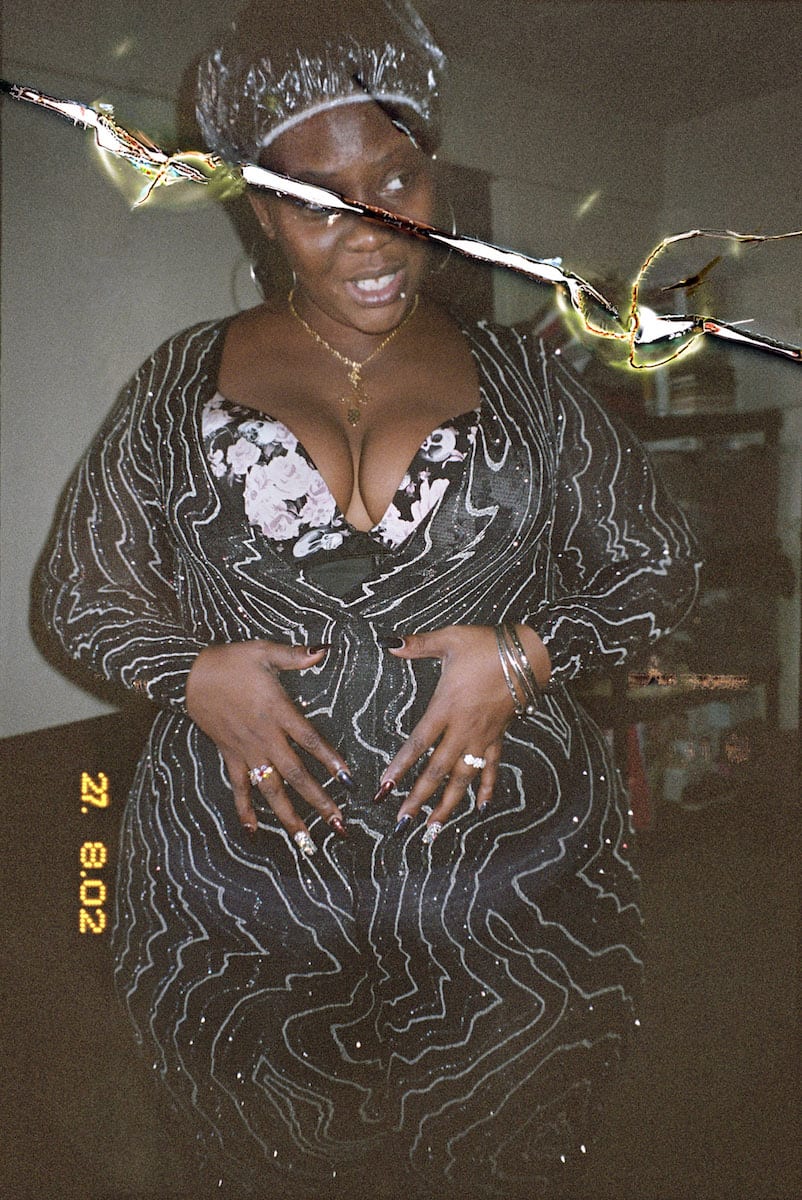
However, Lawson did not originally conceive of Centropy’s curation as a political project. Physical closeness to one’s family engenders a sense of safety for Lawson, and this was her primary motive for placing the images together. The positioning acquired new significance with the advent of Covid-19 when closeness became indicative of danger and disease. The pandemic led Lawson, who lives in New York City, to immediately leave and travel upstate to Rochester, New York, to be near her family where she felt more at ease. Meanwhile, the intimacy of the subjects on the walls of the gallery became emblematic of both comfort and fear.
Family is a central chapter of Lawson’s story as a photographer; some might argue, her origins destined her to become one. Born in 1979, she grew up in a working-class neighbourhood on the east side of Rochester, New York, where The Eastman Kodak Company, the pioneer of mass-market analogue photography, was conceived almost a century earlier. Her grandmother cleaned the home of George Eastman, co-founder of the Kodak Empire, where her mother would then work as an administrative assistant for 39 years. Lawson’s father was a manager at Xerox, a company also founded in the upstate New York city, and an enthusiastic amateur photographer, fervently documenting his family, including Lawson and her identical twin, Dana.
“I would say my mom’s side helped me identify what beauty was in the everyday, which I took as the norm, while my father’s side deposited seeds of a wider world to be explored,” she told the American video artist and cinematographer Arthur Jafa in a conversation published in her monograph. Lawson and her sister would go on to attend Penn State University, Pennsylvania, however, multiple sclerosis forced Dana to drop out. Although Lawson was studying business, it was here that she became progressively captivated by photography. “I believe in destiny, and I know I was destined to be an artist with a camera,” she continues. “It all adds up: my grandmother who worked for George Eastman, my mother who was a secretary at Kodak, my aunt who helps people ‘see,’ my father who was the family photographer . . . how could it not be destiny?”
And perhaps it was also destiny that Centropy should open this year. The exhibition — composed of large-scale photographs set in opulent mirrored frames, small snapshot images, holograms, a video, and 16mm films — is tied together by the concept of centropy: the electrification of matter as the universe generates creative renewal; the opposite of entropy, which is associated with disorder. Lawson decided upon the title ahead of the pandemic, and the global resurgence of the Black Lives Matter movement, but it is strikingly fitting given this context: both these events presenting the opportunity for humanity to push for a better world. Centropy seems to exist in every one of Lawson’s photographs: her subjects are electric. And, with Axis, we witness it in full force: three women radiating such power that they transcend reality and become a portal onto an uncharted realm; a plane above and beyond the dimly-lit room in which they are shown.
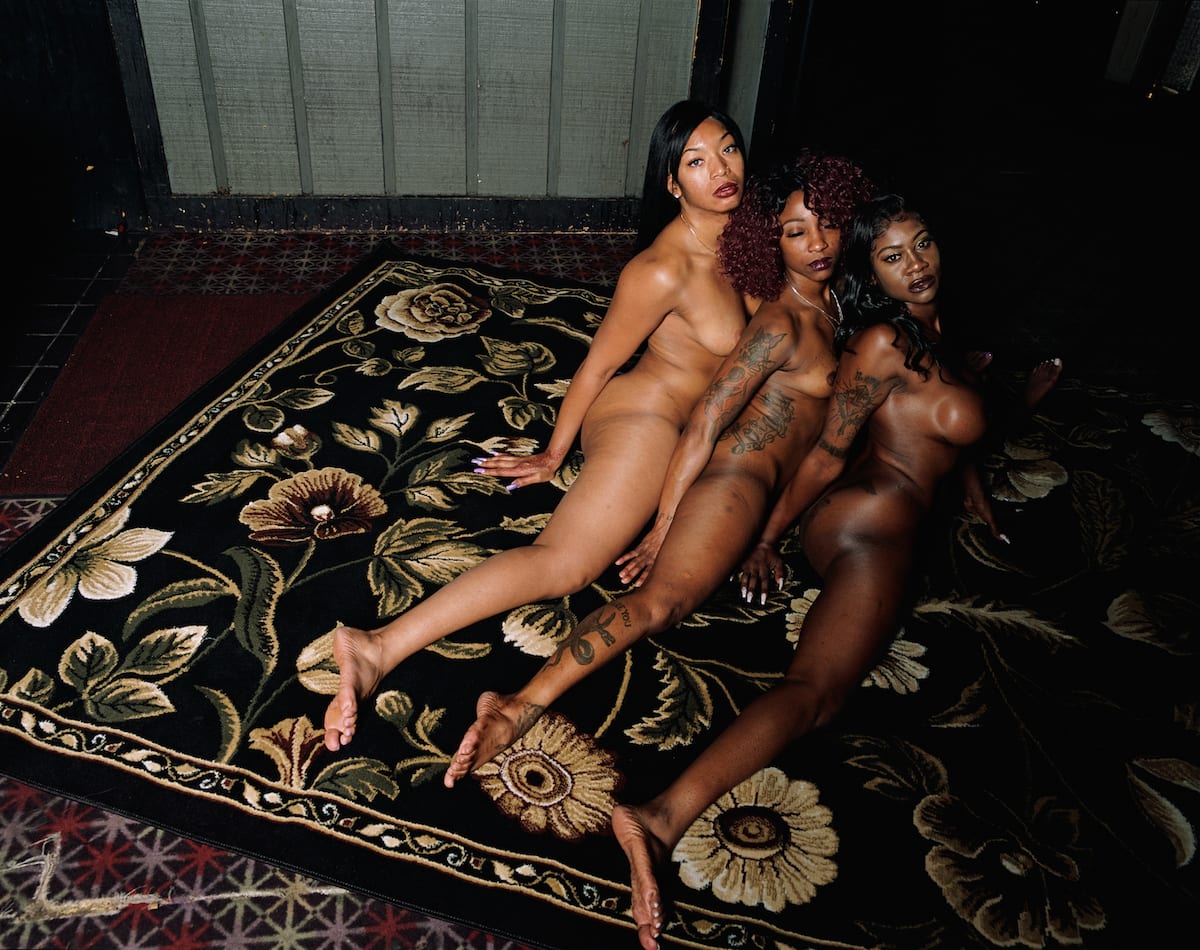
Centropy is on show from 09 June – 11 October 2020, at Kunsthalle Basel, Switzerland. It was co-produced with Fundação Bienal de São Paulo as part of the 34th Bienal de São Paulo – Though it’s dark, still I sing
Hannah Abel-Hirsch
Hannah Abel-Hirsch joined British Journal of Photography in 2017, where she was Assistant Editor. Previously, she was an Editorial Assistant at Magnum Photos, and a Studio Assistant for Susan Meiselas and Mary Ellen Mark in New York. Before which, she completed a BA in History of Art at University College London. Her words have also appeared on Magnum Photos, 1000 Words, and in the Royal Academy of Arts magazine.

